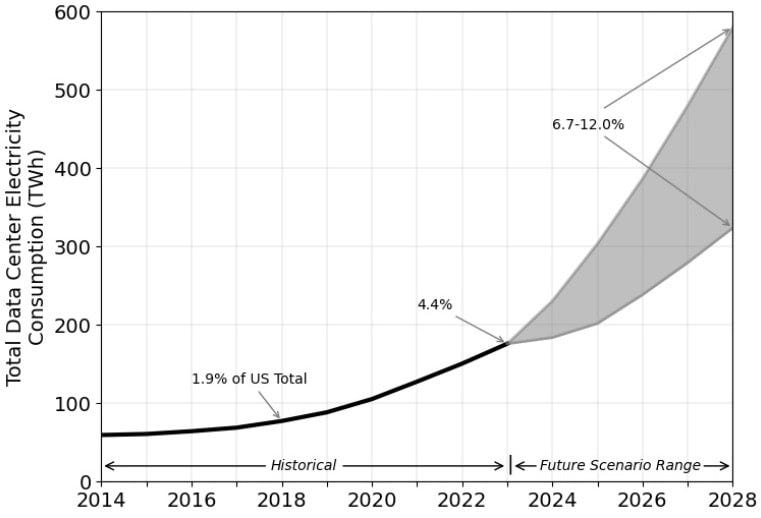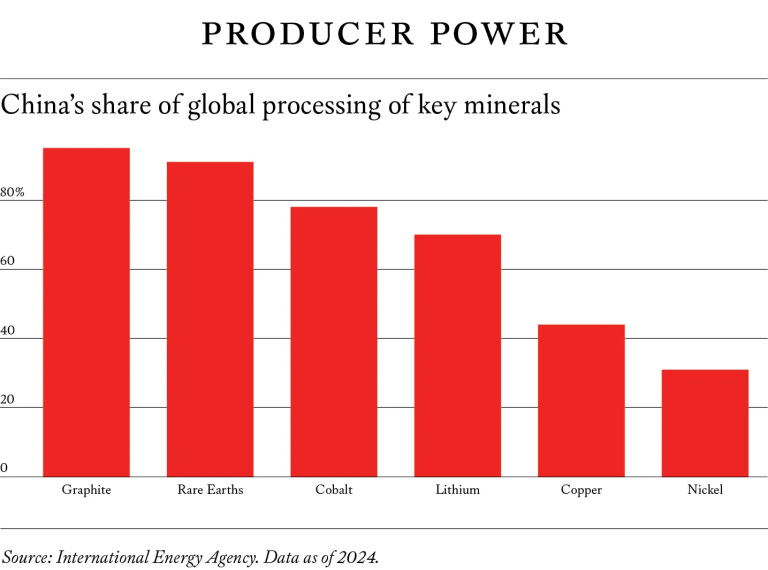From Near-Misses to Mobilization - Reading & Podcast Picks - October 28th
From DOE’s interconnection overhaul to China’s rare-earth dominance, energy security is shifting from local reliability to global power plays.
Last week, I wrote about how policy signals and on-the-ground work rarely move in sync. This week’s headlines prove the point.
DOE is asking FERC to move faster. NERC says reliability is under pressure. ERCOT’s still trying to get a handle on what’s actually coming down the line.
None of it is surprising. It’s what happens when growth outpaces planning.
But for those of us who build things for a living, it’s worth tracking who’s reacting, who’s adapting, and who’s still hoping it’ll slow down.
DOE Pushes FERC to Rethink Large Load Interconnections (DOE, Reuters, UD)
The Department of Energy made an unusual move last week: it formally directed FERC to start a rulemaking on how large electricity loads connect to the grid.
In its letter, DOE Secretary David Crane wrote that
“The interconnection of large loads directly to the interstate transmission system falls squarely within the Commission’s jurisdiction.”
DOE says the action is needed because an “extraordinary” amount of new power is being requested by industries tied to AI, electrified manufacturing, and defense supply chains. The new rule would allow joint interconnection of both the load and its on-site generation or storage.
It’s a shift away from “wait your turn” queueing toward coordinated builds, where the load itself becomes part of the grid plan.
For operators, that means more projects that combine transmission, distribution, and on-site assets into one package—something veterans already know how to coordinate.
NERC Warns of Growing Reliability Risks (Utility Drive)
At a FERC conference this month, North American Electric Reliability Corporation (NERC) President Jim Robb said the grid remains reliable but increasingly fragile.
“The reliability of the power grid remains extremely high,” he told regulators, “but the risks to reliability continue to mount.… We’re seeing an increasing number of small-scale events and near misses that reinforce what we can’t call anything but a five-alarm fire.”
The “five-alarm” comment isn’t about panic, it’s about pace. Data center demand, fuel dependencies, and weather extremes are stressing systems faster than upgrades can keep up.
This isn’t alarmism, it’s a call to mobilize. Reliability work means boots on the ground: grid hardening, vegetation management, new substations, battery integration, control systems. These are veteran missions.
For people in the field, it means more repair work, modernization contracts, and coordination between transmission and local distribution. The system isn’t failing, but it’s running hot.
ERCOT Plans Data Visibility Upgrade for 200+ GW of Large Loads (RTO Insider)
ERCOT told the Public Utility Commission this month that it’s working on new reporting requirements for “large loads,” with more than 200 gigawatts of potential demand already in the queue.
Staff said the goal is to improve data visibility and coordination by 2026. Today, many industrial or data-heavy projects announce late, giving utilities and regulators little time to plan transmission upgrades.
It’s a simple problem that becomes a big one: without good visibility, it’s impossible to forecast or build efficiently. Better data means smarter sequencing and fewer surprises in planning cycles.
There’s a reason electricity prices are rising. And it’s not data centers (WaPo)
The Washington Post ran a great piece breaking down the real drivers behind electricity price increases and despite all the attention on data centers, they’re not the main reason rates are up.
Most of the cost pressure isn’t from generating power, it’s from maintaining and expanding transmission and distribution, the poles and wires that keep the system running. According to the Brattle Group and LBL, transmission spending is up nearly 150% since 2005, while generation costs have fallen more than 30%.
“What that means is you can then take some of those fixed infrastructure costs and end up spreading them around more megawatt-hours that are being sold and that can actually reduce rates for everyone,” said Brattle’s Ryan Hledik.
That’s the paradox: in some regions, rising demand can actually lower costs, because fixed costs are spread across more customers. North Dakota, for instance, saw a 40% jump in demand, partly from data centers, but prices fell after inflation.
It’s a reminder that electricity doesn’t follow simple supply-and-demand logic. Most of the costs are fixed, and most of the system runs on reliability, not scarcity.
As we electrify more of the economy, building smarter infrastructure and not just more generation, is what will keep prices stable.
FERC Orders MISO to Clarify Merchant Transmission Rules (Utility Dive)
FERC has told the Midcontinent Independent System Operator (MISO) to explain how privately financed transmission projects, often called merchant lines, fit into its regional planning process.
“MISO must clarify the inclusion of merchant transmission projects in its long-range plan,” FERC wrote in its October order.
It’s not a headline-grabbing decision, but it’s important. Merchant lines could create new ways to move clean energy between regions without relying solely on federal funding or utility partnerships.
More routes mean more work: surveying, siting, permitting, and construction. The grid’s future might not be owned by a single entity but built through partnerships that move faster than the old model.
The Return of the Energy Weapon (Foreign Affairs)
Foreign Affairs lays out a simple reality: energy is back as a tool of state power. The article walks through a century of examples, the post-’73 reforms that cooled things off, and why the last few years changed the calculus again.
“In a world that had grown accustomed to relatively stable and secure energy markets… the return of the energy weapon has caught many by surprise.”
Russia used gas flows to hit Europe’s economy. China has restricted exports of critical minerals and components that sit inside semiconductors, EVs, and batteries. The United States has leaned on sanctions and trade tools. Even allies are making defensive moves on electricity exports.
Two drivers stand out. First, great-power competition and economic fragmentation make energy leverage attractive again. Second, the system itself is changing. Oil markets may tighten as shale slows and OPEC’s share rises. LNG is more flexible than pipelines, but chokepoints and politics still matter. Electrification reduces some import risks, but it shifts exposure to minerals and manufacturing that are concentrated in a few places.
“China is the top producer of 19 of the 20 critical minerals… and accounts for more than 70 percent of global refining capacity.”
The piece does not argue for autarky. It argues for resilience. That looks like more efficiency, faster grid modernization, diversified supply chains, targeted stockpiles, and clear guardrails when the state steps in. Energy independence as a slogan is neat, but the article reminds us that the United States is still tied to global markets and price shocks.
The upshot is practical. Keep building domestic capacity in generation, wires, storage, fuels, and processing. Diversify sources for minerals and components. Harden the grid and manage peaks. Use clear programs to bring new manufacturing online without turning every move into a political football.
“To be truly energy secure… the United States should invest not just in its own oil and gas sector but also in solar and wind power, batteries, electric vehicles, critical minerals, nuclear fuels, and other energy technologies.”
It is an all-in posture. Less drama, more redundancy. That is how you take leverage off the table.
Final Thoughts
Grid reliability and load growth aren’t new problems, they’re just stacking faster.
The lesson this week is the same as last: the work won’t wait on perfect coordination.
For veterans and operators, that’s familiar territory. You plan what you can, adapt to what you can’t, and keep the mission moving.
If this roundup helps you make sense of where the next challenges and opportunities are showing up, share it.






